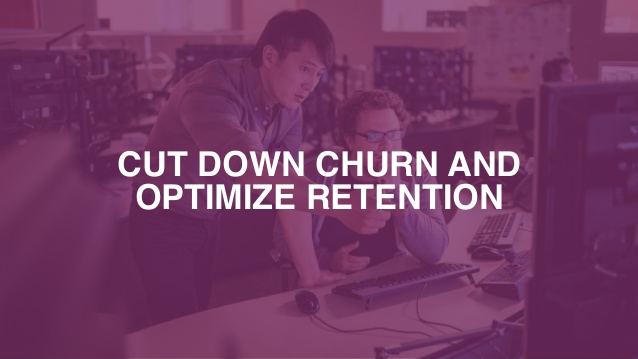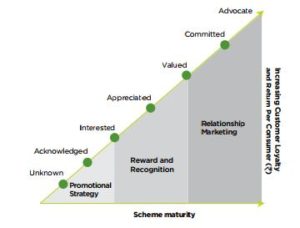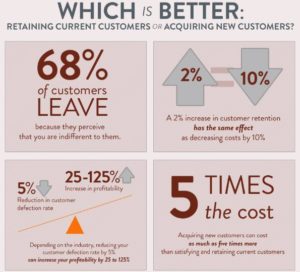Customer Retention Optimization
“Please note this call may be recorded for quality purposes….Thanks for calling. After the beep, kindly rate your experience with us from 1 to 5, 5 being best”
We recollect hearing the cassette speak when we dial the customer service department of any provider. From a telecom company to an E-tailer or from a hotel to an airline, almost all businesses today laud the criticality of acquired customers’ databases in not only retaining them but also for acquiring new prospects. For marketers propelling for individual marketing despite umpteen number of accounts which their companies onboard with every passing business cycle, these databases are of strategic significance. These lavish reservoirs of data apprise marketers of variables like age of the said account with the provider, its purchase trends and likelihood of repeat interaction. When it comes to implementation of a strategy on knowing the coordinates of their accounts, however, these marketers blow hot and cold on which road to take; offensive or defensive, acquisition or retention and further what to budget for each?
Case in point: Volvo, the Swedish automobile manufacturer, estimates that its cost of generating a new customer is three times the cost of retaining a present customer. Going by this, does the retention budget be pegged higher than the promotion budget?
Young working professionals often practice this rule of thumb in marketing management not to consider an experience with a customer as a one-time interaction but as the commencement of a journey which lasts well till the lifetime of the customer or that of the company whichever is lesser. It is based on the premise that the provider ensures the delivery of an unparalleled experience to the customer, takes prompt feedback and alleviates the shortcomings as pointed out in consumer insights.
From a customer attraction and a retention perspective, a profitable customer is a customer whose income, generated during the commercial relationship, exceeds with an acceptable amount costs supported to attract, satisfy and keep him. This amount is called customer lifetime value (CTV). It is this metric that all providers must aim to maximize by increasing the contribution from customers retained and prospects acquired to the extent of optimality. Achieving this exemplary state is what marketers call Customer Retention Optimization.
Analytics to compute the lifetime value each customer creates for the company provide a benchmark on how much to spend on retention of that customer. This is how customer retention can be optimized. During a 2 month long internship with a leading FMCG in India, I applied Pareto’s 80-20 rule to analyze sales value data of the customers in 11 tier-2 towns of North India. The study indicated that 80% of the sales come from only 20% of the existing customers. Others were either irregular or new.
Such a scenario is noticed across all industries, business units and businesses today. With caveat vendor becoming the mantra of today’s marketplace, competition among sellers necessitates implementation of highly differentiated retention practices. For customers who are loyal, even if the companies have to shell out higher in terms of their acquisition cost, it proves to be profitable. But this proportion is meager.
In such a situation, segmenting customers and thus, allocating higher retention budgets for most defaulting customers can optimize provider’s retention efforts. In a study by Kapow events, it has been found out that a 2% surge in retention is equivalent to a 10% drop in cost. Clearly, achieving the former is a desirable proposition.
Let’s assume a provider continues to onboard new customers with each of its offering. As the business cycle progresses, new customers can’t outnumber customers who have interacted with the company at least once. That said, providers cannot afford to abandon promotional efforts to acquire new as well as existing customers. To leverage this brand equity, however, the provider requires a robust engagement mechanism which can ignite a top-of-the-mind recall, a sense of loyalty and belongingness in the minds of its existing customer.
Best practices to boost Customer Lifetime Value:
- Outreach initiatives with customers reinforce strong bonds and trust. Documenting these and broadcasting over all mediums and social media properties further maximizes reach of communication of the product and its provider. We have seen this is case of Reckitt Benckiser’ Harpic and Unilever’s Dove.
- Feedbacks at all possible touch points provide valuable insights to the decision makers with a bird’s eye view as to what to improve and what is redundant. Examples involve knowing the level of customer satisfaction pre, during and post a moment of truth or a purchase experience.
- Customer Loyalty Programs strengthen relationships
Aimia, a global leader in loyalty consulting published a white paper on Customer Loyalty in India which suggests while 2 out of 3 millennial participants are responsible for recommending the brand to purchase; the older generation remains the ones in charge of payment. To engender customer loyalty, it is therefore important to recognize and engage both the influential, as well as the financially responsible family members.
- Study by Kapow Events reveals that 68% of the customers leave the because they feel that the company is indifferent to them. This implies taking a word of advice from the customers puts them in a position of authority and sends a signal that the provider cares what customer thinks about its offerings. Irrespective of whether the said experience was satisfactory or not, such a customer is more likely to come back to at least try the difference.
Vast amount of data accumulated through tons of customers interactions make certain variables like customer retention rate, lifetime value and brand recall and recognition clear for marketers. Using these and making communication reach out wide wherein the providers promise less to its prospects but deliver more makes all stakeholders happy. Customers are hence less likely to point out shortcomings on what they have not got because the provider has performed better than their expectations on certain other grounds. This dictum will not only ameliorate the retention but also feature out another proposition to acquire new accounts. Defensive which focuses more on retention denotes complacency and offensive represents higher risk appetite for a provider. To sum it up, a balanced and reasonably risky approach is what a provider must adopt to optimize its customer retention.
-
Design



